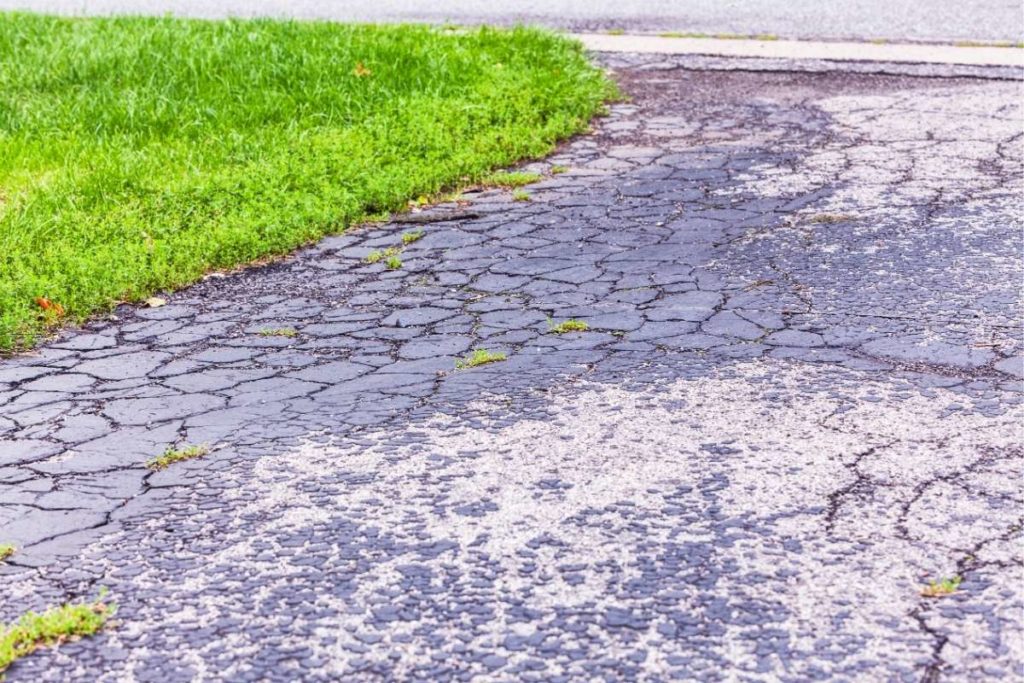Your asphalt driveway is one of the first things people notice when they pull up to your home. It adds to your property’s curb appeal and serves a practical purpose daily. Regular attention is needed to stay in good shape and maintain your asphalt driveway effectively, like anything exposed to the elements. With some simple care and a proactive mindset, you can extend the life of your driveway and avoid costly repairs down the road.
Keep Your Asphalt Driveway Clean Year-Round
The foundation of good asphalt driveway maintenance is keeping it clean. Dirt, leaves, and oil can trap moisture and cause the surface to deteriorate faster. Oil stains are especially harmful, as they break down the asphalt over time. Regular sweeping and an occasional pressure wash help preserve your asphalt driveway’s appearance and prevent long-term damage. Avoid using excessive pressure that could wear down the surface.
Watch for Cracks and Catch Them Early
Cracks are inevitable, especially in regions where the seasons bring freezing temperatures in the winter and extreme heat in the summer. Water seeps into tiny fissures, freezes, and expands, forcing the cracks to grow larger over time. If left unchecked, they can lead to potholes or widespread surface damage.
It’s a good idea to inspect your driveway every few months. Even hairline cracks can signal future problems if ignored. If you notice extensive cracking, especially patterns that resemble reptile skin, known as alligator cracking, it may be time to consider a professional assessment. Sometimes, the damage is beyond patching and may require complete driveway replacement to restore appearance and structural integrity.
Fill Cracks Before They Worsen
When you spot a crack, don’t wait; fix it as soon as possible. Crack filling is one of the easiest DIY maintenance jobs, and it can make a real difference. Start by cleaning the crack, removing any loose debris, dirt, or weeds. Once clean and dry, use a crack filler product explicitly made for asphalt surfaces. Some fillers are designed for narrow cracks, while wider ones may need a thicker patching compound.
After applying the filler, let it cure according to the product’s instructions. Ideally, do this on a dry, warm day for the best adhesion. Sealing cracks not only stops water from getting underneath the surface but also strengthens the surrounding area and extends the life of your driveway.
Sealcoat Every Few Years
If you really want your driveway to look and perform like it did when it was new, sealcoating is essential. A sealcoat adds a thin, protective layer over the asphalt, shielding it from UV rays, water, oil, and general wear. Over time, sunlight can fade asphalt and dry it out, making it more brittle and prone to cracking. A fresh coat of sealant restores its rich black finish and acts as a weatherproof barrier.
Manage Water Drainage
Water is one of the biggest threats to asphalt. If it doesn’t drain properly, it can pool on the surface or seep into small cracks, leading to severe damage over time. That’s why ensuring your driveway has good drainage is so important. Ideally, it should be sloped slightly to direct water away from your home and toward a street or drain.
Take a look around after a heavy rain. Are there puddles sitting on your driveway hours later? That’s a sign of poor drainage. Sometimes the solution is as simple as clearing debris from nearby gutters or trimming vegetation. In more serious cases, you might need to install a trench or French drain to redirect water. Preventing standing water now can save you thousands in repairs later.
Be Mindful of How You Use the Driveway
Asphalt is built to handle the weight of passenger vehicles, but that doesn’t mean it can support everything. Parking heavy trucks or trailers in the same spot for extended periods can cause indentations or cracks in the surface. The weight compresses the asphalt and weakens the area beneath.
Even something as simple as turning your car’s wheels while stationary can wear out the surface, especially during hot summer days when the asphalt softens. Try to avoid tight turns and rapid movements. Encourage guests and family members to back out in straight lines rather than turning sharply on the spot. Minor adjustments like these help preserve the surface texture and structure.
Take Care of the Edges
The edges of your driveway are more vulnerable than the center, especially if there’s no physical boundary like stone, concrete, or landscaping to reinforce them. Over time, grass and weeds can creep in and weaken the asphalt on the sides. Once cracks form at the edges, they tend to spread inward.
Keeping grass trimmed and pulling weeds as soon as they appear helps prevent this damage. You can also install edging materials like brick, steel, or even decorative stones to create a physical barrier that looks great and adds a layer of protection.
Consider a Professional Inspection for Older Driveways
If your driveway is over ten years old or has recurring issues like large cracks, frequent pooling, or surface crumbling, it might be time to call a professional. A qualified local paving contractor can assess the condition of the base layer and recommend whether resurfacing, sealing, or even a full replacement is the best course of action. Regular inspections don’t mean you’re committing to major work—they simply help you make informed decisions about the condition of your driveway and catch potential issues before they become serious.
Protect Your Investment with Smart Maintenance

A well-cared-for driveway stands up to the elements and keeps your home looking polished and well-maintained. With a bit of regular effort, you can enjoy a smooth, durable surface for many years. For more information on asphalt driveway maintenance and repair, contact Richfield Blacktop today.




